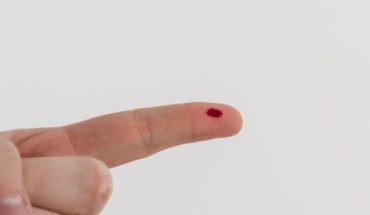The ancient Maya called it Oox and they knew its benefits for more than five centuries. Today it is common to find it around archaeological sites, such as relicts of ancient cultivars, and in courtyards of the current Mayan houses. It is the ramón, a tree that proliferates in the southeast of Mexico and Central America, with multiple virtues and that inspires community projects that generate jobs, nutritious food options and, at the same time, the conservation of the tropical forest.
This generous tree is mentioned from the Chilam Balam and the Popol Vuh, two key texts of the Mayan worldview. Through myths, stories and local practices, the Maya were inheriting knowledge about the properties of their leaves, fruits and seeds; traditional knowledge that in recent decades has been corroborated by science.
Scientists not only propose that this tree can be an ally in fields such as medicine or nutrition, there is also research that highlights its potential to detonate territorial management dynamics that allow conserving or even regenerating the forests of the Yucatan Peninsula.
In the Yucatan Peninsula, the ramon is one of the most abundant trees. Photo: Juan Mayorga
“In Yucatan there is almost no soil, which is a very rugged situation, but the ramon that does grow there would allow us to restore marginalized agricultural soils, degraded livestock soils and, of course, enrich the acahuales,” said biologist Alfonso Larqué in 2015, who dedicated much of his career to research and promote the virtues of this tree that has as its scientific name. Brosimum alicastrum.
Larqué passed away in 2021. He was director at the Center for Scientific Research of Yucatan (CICY), where a tradition of studies on this tree survives.
Along with the scientific work, in the Yucatan Peninsula there are several ventures that attend the invitation of researchers such as Larqué to take advantage of the different resources of the Brosimum Alicastrum.
In the ejido of Tres Garantías, in Quintana Roo, for example, a group of 8 women grouped in the Selva Viva 3G cooperative sustainably uses leaves and seeds of the majestic tree, to make different edible products. Its community project is not only an employment option, it is also a commitment to disseminate the broad nutritional virtues of the Brosimum Alicastrum.
One of the nurseries where ramon trees are produced in the Yucatan Peninsula. Photo: Thelma Gómez.
Read more | Forests more vulnerable to pests: an effect of climate change already seen in Mexico
From the ramón, everything is taken advantage of
The ramon is so generous that it is difficult to highlight any of its uses, although many of them are as food. It is no coincidence that Brosimum let be a Greek word meaning “edible.”
Its leaves serve as fodder for livestock and to prepare infusions. A good amount of jungle fauna feeds on the fruit – deer, peccaries, monkeys, bats – and from the dehydrated and ground seed a very nutritious flour is extracted. The shell of the seed, the pericarp, is used to prepare tea and, in addition, can be fermented to produce an alcoholic beverage.
Meanwhile, the wood of the ramon is prized in the construction, and the standing tree, with its leafy presence, is useful to provide shade and refresh. In addition, with its bark tonics are made to treat diseases such as asthma, diabetes, tuberculosis and bronchitis.
Fruit of the ramon in the hands of women of Quintana Roo. Photo: Courtesy of Selva Viva 3G
And this is only considering the uses that we humans give them, but within the middle jungle that characterizes the Yucatan Peninsula, there are many more species that benefit from the ramon.
The almost 45 meters high tree in the jungle state are used as a refuge for different animals. For example, the majestic king vulture includes it as one of its favorite species of perch, while different species of bat nest in the hollows of its trunk, which can be up to 1.5 meters in diameter.
In short, the ramon gives house, food and medicine to all kinds of living beings of the Mayan jungle. Perhaps it is because of this generosity that in Mexico, the species is known with more than twenty common names, including capomo and ojite.
The tree can reach up to 45 meters in height.
Read more | How chewing organic gum helps conserve the Mayan jungle
A living jungle that gives food
At the southern tip of the Yucatan Peninsula, almost on the border with Belize,A decade ago, a group of women from the Tres Garantías ejido joined the Selva Viva 3G cooperative to market the products that have the leaves or seed of the tree as their main ingredient. Today the teas and flours they make are already sold regionally and through the internet.
“The products we make with the ramon are innovative and nutritious,” says Cristina Nieves, a member of the cooperative that distributes its products under the Ruez brand, a word inspired by the phrase “ramón nut”.
Cristina Nieves and her seven colleagues have worked hard since starting their cooperative in 2011, with support from the non-governmental organization Reforestamos México.
Women of the cooperative. Photo: Courtesy of Selva Viva 3G
On a small property in the urban center of Tres Garantías, the women have machinery to dehydrate leaves, roast and grind seeds. In another room, the cooperative members have everything they need to package, label and store the products. Ruez’s logo is a reminder of the admiration these women have for the ramon and his story: “The tree that nurtured the Mayan empire.”
Martina López, legal representative of the cooperative, explains that they decided to create teas and flour to make bread and water from horchata – a traditional drink – because they can have more life on the shelf. In addition to being products with nutritional properties.
Ramon tea provides amino acids, fiber, calcium and folic acid. Flour has a high calcium content.
To know the nutritional value of the leaves, fruits and seeds of the tree, bromatological analyses have been carried out, which consist of examining the components of a food through chemical digestion and incineration processes and the use of reactive substances such as ether or solvents.
Woman from the cooperative checking the ramon seeds. Photo: Courtesy of Selva Viva 3G
One of these studies was promoted by Alfonso Larqué’s group. The Mexican scientists, from the Center for Scientific Research of Yucatan (CICY) and the Autonomous Metropolitan University (UAM), were responsible for collecting the seed of the ramón in several plantations, including in the municipality of Ticul, Yucatan, and prepared different samples: fresh, dehydrated, ground and chopped seed, which they then sent for analysis to laboratories in Mexico, United States and Canada.
The results, published in 2017, showed that the leaves and seeds contain 53% dietary fiber, 37% carbohydrates, 11% protein, as well as high calcium, iron, zinc, sodium, folic acid, and vitamins B1 and B2.
“We found that the seeds have a very high nutritional quality, similar to corn. It can be used without major problem to feed the population and livestock, due to its protein, fiber and mineral content, and it does not have gluten,” explains researcher Silvia Vergara, a collaborator of Larqué and head of the Natural Resources Unit at CICY.
“These products were the food of the Mayans and still in the Caste War, when corn became scarce, our ancestors saw in them an alternative,” explains Cristina Nieves, of the Selva Viva 3G cooperative.
Women of Selva Viva 3G reviewing ramon leaves. Photo: Courtesy of Selva Viva 3G
Read more | Mexico: the community forest that became a seed of jobs
Sustainable forest management
To obtain the raw material used in their products, the members of the Selva Viva 3G cooperative have the support of the commissariat of communal goods of the ejido Tres Garantías, which in its 44, 520 hectares of surface guarantees a sufficient supply of leaves and seeds of ramón.
“We make a balanced harvest, we leave for the animals of the jungle, for our seedbeds and a part for the product that we are going to occupy,” explains Martina López.
By itself, this tree is one of the most abundant species in the Mayan jungle; however, the cooperative members do not trust each other and reforest some of their lands as part of a project promoted by the Chiclero Consortium and financed by the World Bank.
“The ramón is going to be the food of the future, but we are planting to always have enough,” explains Victoria Solís, another cooperative member, while supervising the reforestation with ramón in 7 hectares of the ejido lands.
Members of the Tres Garantías community collect fruits from the ramon tree. Photo: Courtesy of Selva Viva 3G
With the guidance of forestry technicians, the women of the Selva Viva 3G cooperative and their families carry out a sustainable management of the ramón that includes, in addition to reforestation, seed collection, greenhouse work, thinning of the forest to facilitate the passage of light through the canopy of the canopies, care of the fauna and protection against agricultural or livestock uses.
In an environmental perspective moremplia, this non-timber use of the ramón in Tres Garantías joins others with low environmental impact, such as chewing gum extraction and ecotourism, as sustainable ways for the conservation of the forest and social development of the community.
“This is the forest, if you take care of it and you clean it you get a healthier forest, with greater growth, with more beautiful wood, more fauna, better fruits for the fauna,” explains Sergio Madrid, director of the Mexican Civil Council for Sustainable Forestry (CCMSS).
Being an important source of food for wildlife and humans, and providing ecosystem services such as shade and carbon storage, the ramon tree is a priority species for the Quintana Roo Forest Ecosystem Conservation and Restoration Program.
Reforestation works in the tres garantías ejido. Photo: Juan Mayorga.
Read more | Mexico: How chewing organic gum helps conserve the Mayan jungle
Boost appreciation for a tree
In Chetumal, the capital of Quintana Roo, is the Cafecito de Olla cafeteria. Its manager, Patricia Vera, explains that for five years they have been buying ramon flour from the women of Tres Garantías, with which they make the cupcakes and atoles they sell in the place. Also ramon leaves to prepare tea and seed husk for coffee substitute.
“We offer ramon’s coffee for the benefits it has and more to people who do not consume caffeine. It’s a pleasant taste, similar to the roasting of the coffee bean,” explains Vera, who also prepared a book with recipes to prepare the products of the ramón in salads, tamales, empanadas and other foods.
The challenge posed by scientists, cooperative women and ejidatarios is how to increase the visibility and consumption of foods derived from the leaves and seeds of the ramón to address major problems, such as malnutrition or food insecurity due to the dependence on the import of basic grains that Mexico is experiencing.
Patricia Vera, manager of Cafecito de Olla, holding a bag of ramon leaf tea, from the Ruez product, made by the women of Tres Garantías. Photo: Yanine Quiroz.
Copies of Brosimum alicastrum they can live up to a hundred years and a single tree can produce 60 to 95 kilos of seed per year, according to research by Larqué’s team. In addition, being an evergreen tree – it produces leaves throughout the year – it provides large amounts of fodder.
“We have the white ramon and the colorado. A lot of red trees are born that we take advantage of for the leaf, one cuts some good segments and in 3 or 4 months it is very beautiful, full of leaves. The white does not molt much of leaves but we leave it for seeds, “explains the cooperative Member Cristina Nieves.
The benefits of the jungle
This great bioproductivity of the ramón contrasts with the little knowledge that is had of its nutritional properties not only in the world, but in Mexico. For the Cooperative Selva Viva 3G, for example, it has not been easy to insert its products into the national market. The cooperative members work with a low production capacity: they collect between 30 and 37 kilos of seed per day, but they hope to soon expand their sales and get the full potential of their newly acquired machinery.
The researcher Silvia Vergara argues that the first step to extend the use of the ramon and the sustainable management of the forests where it lives would be to integrate it into the Catalog of timber and non-timber forest resources of the National Forestry Commission (Conafor); that would help spread its virtues.
Supplying a commercial production of ramon is possible with the wild trees that already exist in the Mayan jungle, but for engineer Gerardo Ramírez, production manager of the Chiclero Consortium who also accompanies the women of Selva Viva 3G, the ideal would be to have plantations for these projects.
Nursery where ramón trees are produced in the tres garantías ejido. Photo: courtesy of Selva Viva 3G.
“With 500 plants per hectare and two harvests per year, you have at least 20 tons (of seed) per hectare,” explains Ramírez, who estimates that even with a very cheap price per kilo —0.3 dollars, for example—, that yield would generate up to 120,000 pesos per hectare for ejidatarios; a considerable income if it is taken into account that in the forest ejidos of the region the minimum payment in field tasks does not exceed 5000 pesos per month (250 dollars).
“With a company that is already transforming the ramon into a final product on a large scale, it could be placed not only in the domestic market, but worldwide,” says Ramírez, explaining that he has already been aware of the interest in these products in countries such as Germany and Japan.
For now, the Three G Women’s Cooperativearantías seeks to form alliances with other groups that also work the ramón and create a sales strategy with its new machinery to consolidate in the market.
Martina López knows that they still have to work hard to achieve what they have proposed: “We want to cover the republic, sell in quantities that generate profits for the cooperative and the community.”
Read the original article published by Mongabay Latam here.
What we do at Animal Político requires professional journalists, teamwork, dialogue with readers and something very important: independence. You can help us keep going. Be part of the team.
Subscribe to Animal Político, receive benefits and support free journalism.#YoSoyAnimal





